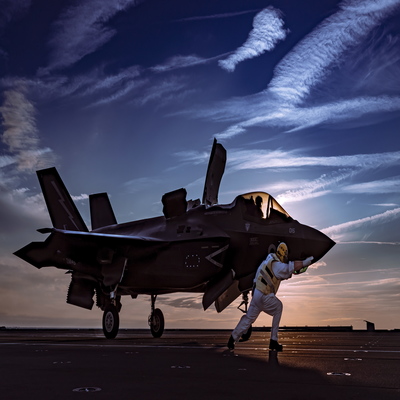To provide the students with an understanding of the electronics theory required in a Guided Weapon and relate this to the GW power chain, actuation and communications technology and requirements. To also provide students with the necessary understanding of signal processing methods for reliable sensor information and communication signals and the necessary command and control functions.
At a glance
-
- Dates
-
- 13 - 17 Oct 2025
- Duration5 days
- LocationCranfield University at Shrivenham
- Cost£2,250 - Standalone Short Course fee Concessions available
Course structure
Lectures, tutorials/discussions, individual case study (MATLAB Dynamic/performance Simulation based for a missile fin actuator system to analyse and design for system bandwidth, frequency response, RL performance design, architectures for feedback, stability.What you will learn
On successful completion of this course you will be able to:
- Synthesise electronic circuit models for guided weapons and analyse their performance,
- Assess the importance of electrical power supplies (EPS) in a GW and justify the role of intelligence and performance enhancement for a GW EPS,
- Analyse how signal processing methods can improve the signal quality, performance and security of sensor information and communication methods in a Guided Weapon System,
- Evaluate the performance of C2 systems within the context of GW.
Core content
- Electronics basic principles, fundamentals of electronic circuits and functionality, pulse width, frequency and amplitude modulation methods, DC, AC and 3-phase AC principles, brushed and brushless motors for actuation.
- Importance of Electrical Power Supplies (EPS) in a GW, role of intelligent and performance enhancement of EPS for a Guided Weapon system, power generation and distribution for a Guided Weapon, EPS design in association to switching characteristics.
- Probability, random variables, probability distributions, covariance, correlation. Noise sources, noise bandwidth, noise figure, noise temperature. Cascaded networks. Mathematical representation of noise, correlation and convolution, Matched filters, the z-transform. Advantages/ disadvantages of DSP, sampling and quantisation, digital filters, DFT and FFT, the effect of filters on sensor and communications information, DSP applications in communications and radar.
- Communication methods for short, medium and long-range missile systems. Transmitter and receiver communication system models, multipath effects
- Command and control for different missile systems and environments.
- Guided Weapon EPS Design: A MATLAB based tutorial exploring the critical EPS design factors for an air-launched guided weapon system. To consider the EPS performance enhancement and key realisation constraints within the context of GW systems.
Upgrade to a professional qualification
When taken as a Short Course for Credit, 10 credit points can be put towards the Guided Weapon Systems MSc.
Find out more about short course credit points.
Who should attend
This course is suitable for officers seeking to fill appointments concerned with military guided weapons systems in the MOD and trials and training establishments. In particular the course is designed for employees within the MOD, the Armed Forces, and the international defence industry to enable them to work more effectively in the fields of designing and specifying realistic/system requirements for the control of guided weapon systems.
Students must have successfully completed the Guided Weapons Propulsion and Aerodynamics Theory in order to take this as a Short Course for Credit. There are no prerequisites if taken as a Standalone Short Course.
Accreditation
The course is fully accredited with the Institution of Mechanical Engineers (IMechE). Accreditation is also presently being sought with the Royal Aeronautical Society (RAeS).
Speakers
Professor John EconomouConcessions
A limited number of MOD sponsored places are available.
Location and travel
Cranfield Defence and Security (CDS) is a Cranfield School based at the Ministry of Defence establishment on the Oxfordshire/Wiltshire borders.
Shrivenham itself lies in the picturesque Vale of the White Horse, close to the M4 motorway which links London and South Wales. It is 7 miles from Swindon, the nearest town, which lies off the M4 at the hub of Britain’s motorway network.
Bath, Cheltenham, Bristol and Oxford are all within an hour’s drive and London less than two hours away by car.
All visitors must be pre-booked in at reception by the person they are visiting on the campus.
How to apply
To apply for this course please use the online application form.
Read our Professional development (CPD) booking conditions.
